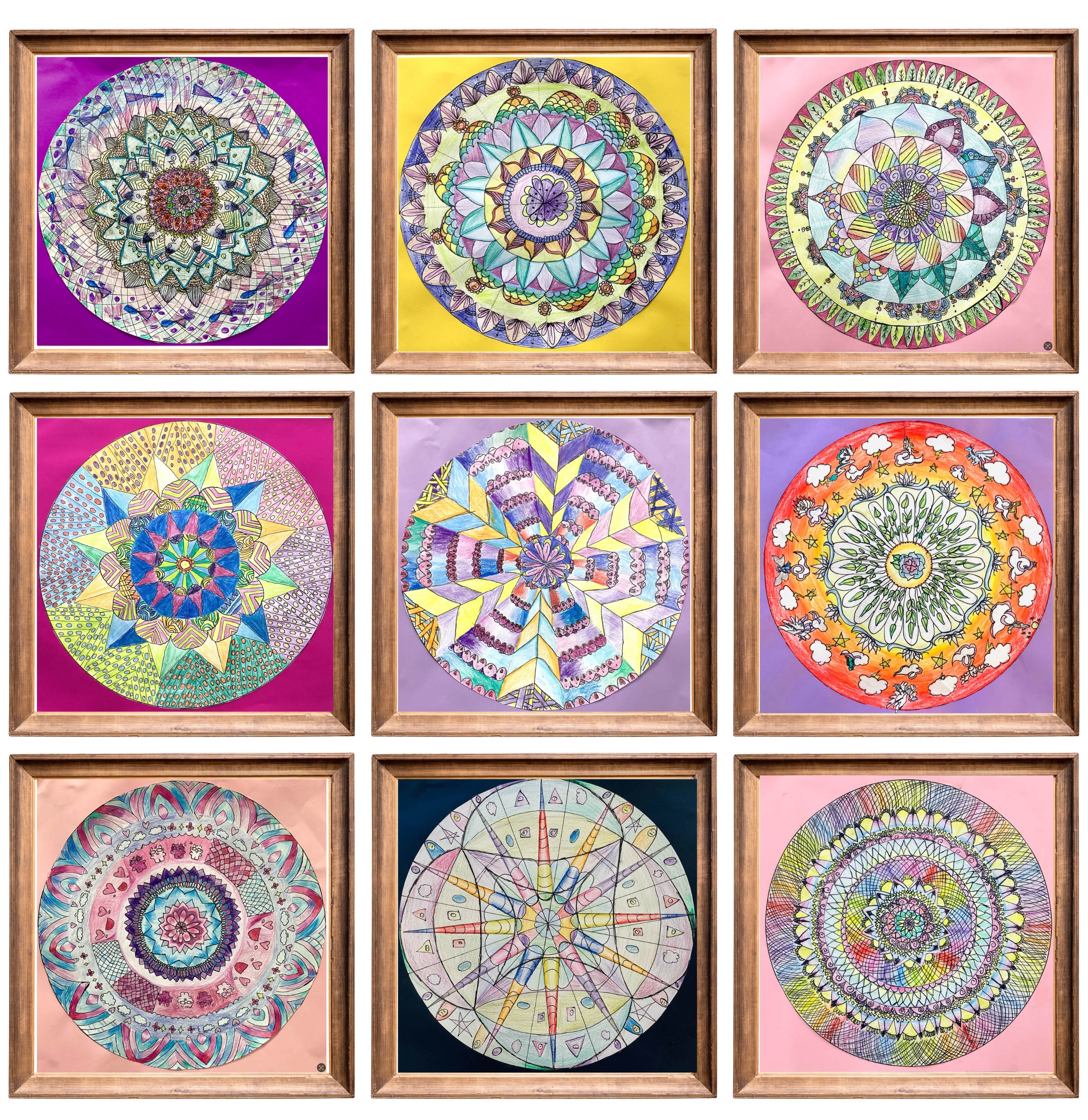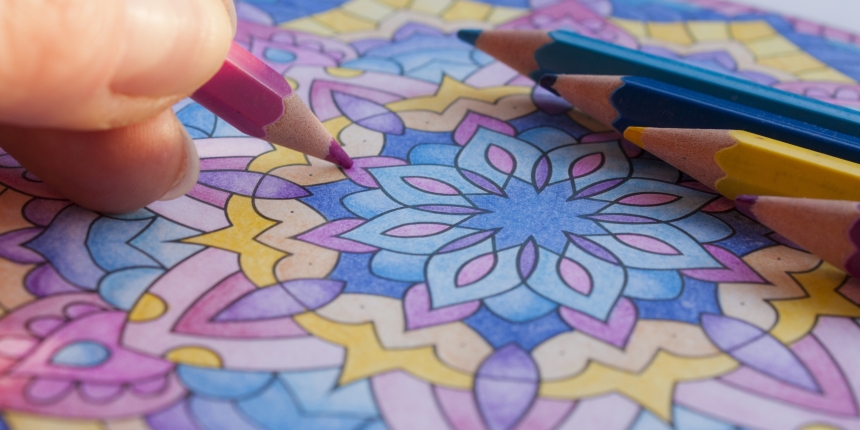Colouring-in has made a huge comeback in recent years.
The reported therapeutic benefits are wide-ranging; In a state of mindfulness, colouring promotes relaxation, reduces depression and even decreases activity in the amygdala, the part of the brain associated with fear and anxiety. When our attention is given to colouring – low-stakes decision-making with our choices of colour, the gentle rhythmic movement of the hand moving back and forth across the page in a rocking motion – we can become temporarily distracted from negative thoughts and emotions and forget our worries. While creative expression in general is beneficial for mental health, the practice of colouring-in can be so much richer and more satisfying when the design itself is our own creation.
Year 5 students have recently coloured their beautiful mandala drawings in Visual Arts. The Sanskrit word mandala means circle. A mandala can be decorative, but traditionally they are symbolic representations of the universe or wholeness and can be a focus for meditation. We viewed examples from Eastern cultures, including the ephemeral sand mandalas originating in India and Tibet. We looked at examples in the Christian architectural tradition of stained glass design, known as ‘rose windows’, which share the same universal symbolism and radial symmetry.
Students were challenged to create their own patterns in a circular artwork. They applied new geometry skills, using a protractor and compass to map out their unique design with radial symmetry. We took inspiration from photographs of pattern in nature and traditional mandala motifs such as organic petals and geometric shapes like stars. Students learnt new colouring skills, such as the ombré colour blending technique, as well as applying different amounts of pressure to achieve a range of colour values. We expanded vocabulary with new understandings of analogous and complementary colour schemes, giving consideration to both contrast and harmony.

Mrs Ann McDermott
Junior School Specialist Teacher (Visual Arts)


